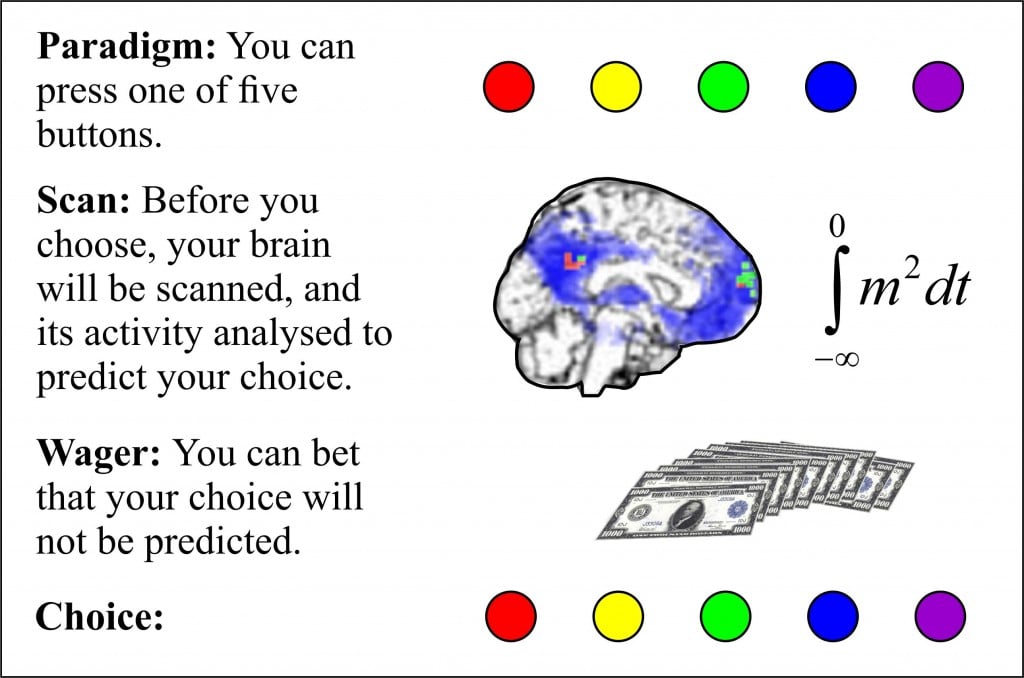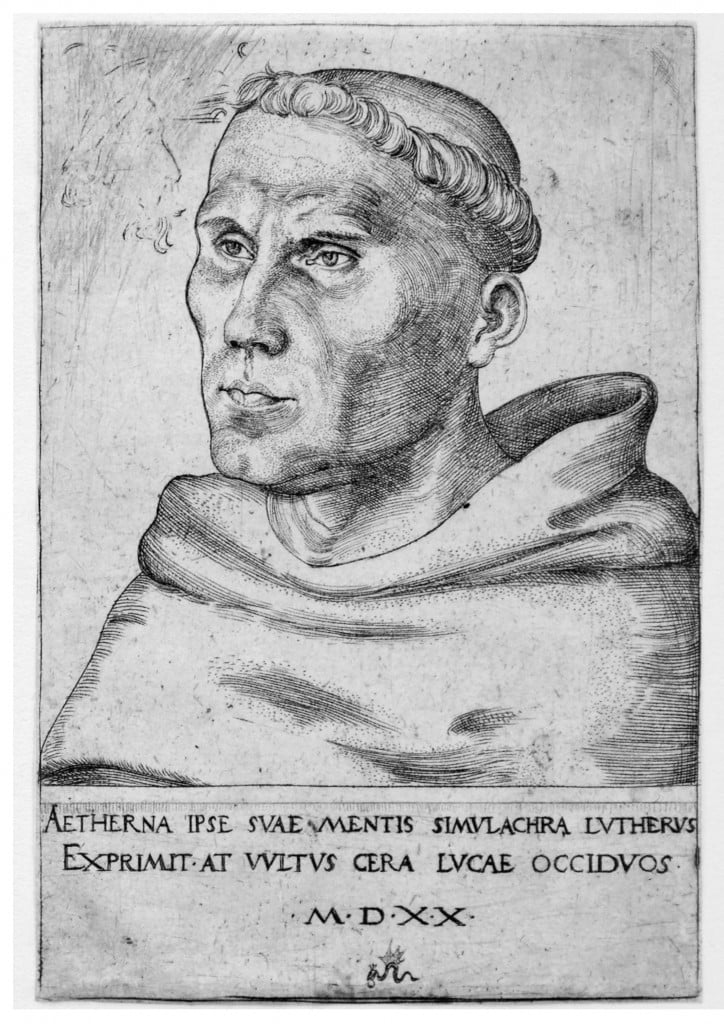Scenario
Imagine yourself 20 years from now. A brilliant cognitive neuroscientist claims to be able to read your brain and predict your future behavior. She studied with Sam Harris in Los Angeles and then completed her postdoctoral work with Chun Siong Soon and John-Dylan Haynes in Berlin. She knows her stuff and she uses the most advanced technology.
You will be able to press one of five buttons. Before you do so, the neuroscientist will take a scan of your brain, analyse it and predict which button you will choose. She will pay particular attention to the posterior cingulate gyrus and the rostral prefrontal cortex. She is willing to bet you that her prediction will be correct.
If you take the bet, you believe in free will. If you do not, you are a determinist – or in this context a “neuro-determinist.”
Faites vos jeux!





